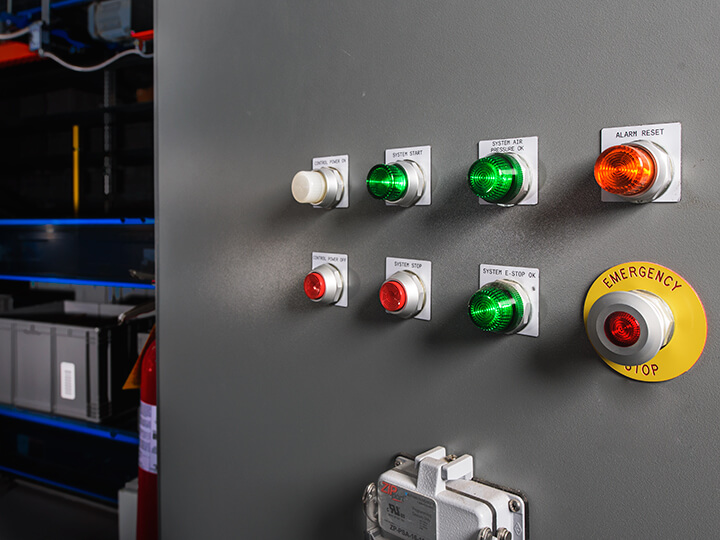Safety standards are vitally important to follow, understand, and implement to eliminate and avoid injuries to personnel from machinery. This is our biennial update as to major changes to American National Standards Institute or ANSI code, and most specifically the B11.0 dedicated to “Safety of Machinery”. Since 1922, the B11 standards for machine safety were first approved with the understanding that machinery design through setup and operations meet specific safety criteria.

Overall the major changes to the ANSI code are B11.0 has been updated to B11.0-2020 and B11.19 has been updated to B11.19-2019.
A great deal of care was taken to harmonize with ISO and EN Standards. You will also notice that ISO 12100 was used to develop B11.0. Then, upon comparison of ISO12100 and B11.0, you can see that compliance with the B11.0 standard ensures compliance with ISO 12100, but not conversely; care must be taken.
The members which govern the boards for standards have a monumental task when updating and establishing standards; they work to create a global standardization which is not an easy task.

Below I have listed a couple of excerpts from the standards;
B11.0-2020 Standard Changes
The current edition of this American National Standard on the
Safety of Machinery (ANSI B11.0-2020) includes updates in the following areas:
• guidance on how to use ANSI B11.0 and type-C standards (Introduction);
• changes to terms used to improve precision of meaning (the Foreword and throughout);
• clarity of terms and definitions (clause 3);
• clarity on responsibilities for component suppliers, machine suppliers and machine users (4.3, 4.4 and 4.5);
• additional emphasis on the feasibility of risk reduction measures (4.9 and 6.5.2);
• improved guidance on how to address existing (legacy) equipment (4.14);
• additional guidance on prevention through design (PtD) (6.5.1);
• additional guidance on achieving acceptable risk (6.7 and Annex G);
• additional guidance on validating and verifying risk reduction measures (6.8);
• new content on layout analysis for control zones (7.3.3 and Annex J);
• new content on span of control (7.3.4);
• new content for manual and special modes (7.3.8 and Annex K);
• new requirements for machinery systems (7.17);
• updates to injury and severity correlations (Annex E);
• new content related to how to use alternative methods for controlling hazardous energy (new Annex L);
• updated outline for instruction handbook/manual (Annex M);
• information on correlating various safety standards and on defining terms for affected persons (Annex O and P);
• removal of unnecessary or redundant content.
B11.19-2019 Standard Changes
The B11.19-2019 standard also had some major changes from the 2010 version. The 2019 revision of ANSI B11.19 contains substantial and significant changes from the 2010 edition, including:
• a change in title as well as a major organizational revision of the standard using the hazard control
hierarchy as a general structure of this standard;
Note: While the organization is based on the hazard control hierarchy found in ANSI B11.0, the reader
is reminded that no order of preference, no level of risk reduction, or any relationship between risk
reduction measure options are implied within this standard.
• removal of the concept of “complementary equipment and measures;”
• improved and harmonized definitions of terms used in the standard with ANSI B11.0 and applicable ISO
and IEC standards;
• clarification of the responsibilities of the supplier, user, integrator/modifier/rebuilder, and personnel;
• enhanced and harmonized requirements throughout the standard (see Harmonization above);
• addition of requirements for Partial Guards, Nip Guards, and Trapped (Captive) Key;
• a segmentation of Perimeter Guards (barriers), Perimeter Risk Reduction Measures, and Whole body
Access;
• addition of requirements for control functions, including safe conditions (safe motion, safe speed, etc.),
safety-related reset, safety-related sensing field switching, whole body access and span of control;
• additional guidance in informative annexes including a significant addition to Safety distance and
Reaching Distance for both protective structures and devices;
• additional content for risk reduction measures not previously included in prior versions of ANSI B11.19
For more detailed information about the above-mentioned code changes, you can order a copy of the current ANSI code from their web store. https://webstore.ansi.org/Home/Index
AutomationDirect has been selling PLCs and other industrial automation products, including machine safety components since 1994. Technical support is top-notch in the industry, and free! Looking for even more safety-related content? Click on the Products menu to see articles on safety devices, and more.

